#1 The Interior Inspection
When performing an interior inspection on a car, it’s basically pretty simple.
First, you want to take an overall look at the upholstery.
Make sure it is not too dirty where a detail can’t help. Most car interiors that you look at may need a detail but this is not a biggie.
I’m sure that you won’t buy a car that needs the whole interior changed because it’s so bad that you can’t even sit or it smells inside the car.
This is where your money will add up.
You can really turn a car around with a nice Interior and Exterior Detail. I have made easy money just giving a car a detail. I’m talking an easy $1,000-$1,500 profit just on good buying and a detail, putting in 2-3 hours of time maximum.
You can sub-out interior and exterior detailing which costs from $50-$150 anyway. I have a personal connection where they do my interior or exterior details for $40 in or out and $75 for a complete detail.
When you have a good relationship with other people in the field – mechanics, auto body men and detail shops, suddenly business becomes a lot easier, and you get better deals. Here is an example on a few older cars that I flipped for profit.
Be sure to check all mechanical buttons and switches!
Check the power windows, locks, cigarette lighter, power mirrors, wiper switches, dome lights, etc.
You may want to start the car and check for the engine light (making sure it doesn’t stay on).
If it does, then you can use that as a negotiating point.
Usually, the oxygen sensor fails on cars with over 60,000 miles and that is what usually makes the check engine light appear.
Again, the check engine light is a MAJOR negotiating plus for you, but please do your due diligence on the engine.
Check all mechanical functions. If you’re really serious about the car, then you might want a mechanic to take a look at the engine code for you if you are not savvy and confident yet.
You can always buy the OBD2 auto code tester at most automotive parts shops for around $200.00. Then you will be able to check the codes yourself anytime.
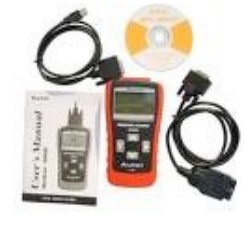
Here are a few tips on sensors.
Be sure to ask why the engine light is ON and if he or she had any diagnosis from a mechanic.
The oxygen sensor is a small sensor that is screwed on the exhaust manifold or on the catalytic converter. The oxygen sensor makes sure the engine is getting proper fuel and air mixture ratio to the engine.
Usually, when the oxygen sensor fails, the car might run too rich or too lean, causing the check engine light to appear. Not a big issue, but something to fix and replace.
It can cost about $150-$350 for repairs depending on the type of vehicle. This is a very common check engine problem and a very good reason to get a better deal.
Sometimes, when you reset the computer, the engine light will turn off for a few days or months. To reset the computer on most cars, just disconnect the car battery.
First by removing the ground cable (BLACK) and then the power cable (RED), get in the car, turn lights on and step on the brakes a few times.
This will drain the power from the system.
Let it sit for 10 minutes, then connect the power cable (RED) first, then the ground cable (BLACK), start the car and see if the check engine light is gone.

WARNING!!!
Be sure to read the owner’s manual and/or buy a Haynes or Chilton’s Auto manual before performing this step. I will take no responsibility for any personal injury or safety hazards.
Read the Disclaimer section of this book.
You want to check all lights – brake, tail, signal and reverse lights; if some are not working.
You can use that fact as a negotiating point. Bulbs are very easy to replace and install.
Make sure all doors open from inside and out. Sometimes, latches and door locks are broken and the seller will not tell you.
Usually, they won’t tell you unless you ask them! Unless they are very honest, which occurs on occasion.
Check the seat belts, adjust seats, etc. Sometimes, you may forget to perform the following and go home with a small issue.
A recent car that I bought had an issue with the passenger seat not locking in position. The seller never told me about it and it was my fault for not checking.
You can also check to see if the AC/Heater works, too.
Make sure the car is running and the AC switch is on.
#2 Exterior/Body/Frame Inspection
The first thing you want to do is look at the body of the car. Scan to see if there are any major dents, sun damage on paint, peeling paint, scuffed up bumpers or dented fenders. Compare body panels to see if you notice major color matching differences, which just means maybe some panels were painted.
Check out moldings for paint on them.
Use the light as a reflection and glance at the outer body by looking down the side of the car from one end. Make sure to use the sunlight or a garage light as a tool to check for ripples or dents.
Most of the time, this is when you can tell if the car has been painted or repaired and the auto body man didn’t do a good job.
If peeling paint is evident on top of the car like the hood, trunk, roof and top of fenders (which is very common), use that as a negotiating point.

Say that you want to get it painted and you know that it will cost around $1,000-$1,500. Try to bring the price down.
Once you get the price down, keep in mind what you plan to do like getting it painted or not.
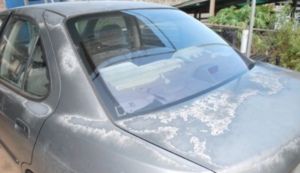
I’ll get deeper into negotiating later. I can’t stress enough about the importance of pointing out every little flaw to the seller’s attention to get a better bargain (at the appropriate time).
Open the hood and trunk, check for rust near weatherstrip rails. Where I live, we can have major rust problems.
Open the hood and inspect the ‘radiator support’ – that’s the metal frame that holds the radiator in place. Make sure it is not bent or damaged. Inspect insides of fenders and under the hood.
Sometimes you can see that the car has been painted.
You’ll see some “over spray” which means that you will see paint on plastic parts of engine or on the inner fender wells that were not masked off properly by the masker – leaving a rough paint or an overspray feel and look.
Be sure to bring that to the seller’s attention by asking them what happened and why it was painted, or ask if it has been painted.
Make sure to keep eye contact when asking sellers questions.
You want to be sure that the seller is not lying to you. You can usually tell if someone is lying to you – we all have an innate sense for telling if you are being lied to or not.
Look in the trunk. You will want to pull up the carpet and check for the spare tire.
Make sure that you don’t see any crinkle in the trunk pan or the floor of the trunk.
You may spot damage or water build-up, meaning that there’s a hole causing a leak from improper body repair or damage/rust around weatherstripping rails.
You’ll often smell mildew in a trunk if there is a leak. Below are pictures of a trunk pan.

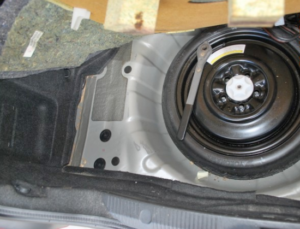
Inspect for wrinkles and water and smell for mold.
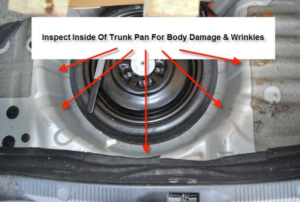
Check all door hinges, making sure that they are not loose or rusty – 95% of the time, they are fine.
Remember to only do this quick inspection if you’re interested in buying the vehicle. Make sure the hood, door and trunk latches from inside also work properly.
#3 The Suspension & Braking System
When checking the suspension system, you’ll want to walk around the outside of the car or truck and push down on each of the four corners a few times.
If the car bounces more than 2-3 times, the shocks need replacing.
A good shock or strut will absorb any bounce… and firming up after the 1st – 1.5 bounce. You can also just take a test drive. If you know what you’re feeling for, you can easily tell if the shocks are good or not.
The fastest way of checking the shocks is to take a test drive. Just remember that too bouncy is no good, it will feel like you’re riding in a boat on a choppy day.
Usually a soft bouncy ride means you need new struts or shocks. A stiff hard bouncy ride could mean that the owner has lowered the vehicle by cutting the springs or installing performance racing springs.
In this case, you’ll want to ask the owner if he has tampered with the suspension system. If so, ask if the original springs are available or ask if the originals had been cut or not.
Money TIP: People like to buy untampered cars, unmolested stock cars.
If you’re in the young kid race niche, then you can sell lowered Honda’s or Toyota’s with big exhaust systems and big bulky body kits. That will be no problem if you’re in that hungry market but I do recommend sticking with stock cars.
I’m teaching how you can make money with the mass market. You will have many more people looking for stock cars rather than modified cars.
People like to modify or customize their own cars.
Once I had bought a 2005 Pontiac Vibe at an auction. It was a salvage title theft recovery.
The vehicle was stolen and tampered with. The thieves had completely removed the springs dropping the car a good four inches.
I do not know what went through their minds when performing such a stupid act …but they also spray painted the car windows from the inside with flat black spray paint to make it look like dark tint.
I had to use a razor blade to clean the paint off the glass.
I ordered a set of after-market springs which cost me $250.
I paid a helper $200 to sand and tape up the car so I could give it a coat of fresh paint.
Check out some of the before and after pictures below. Remember, you do not need to buy cars that need a lot of work like this.
I got it for a good deal and I had access and the skill to paint it myself which just made me more profits.
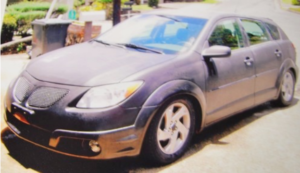
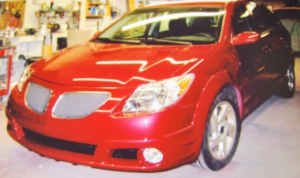
2005 Pontiac Vibe Before and After Paint
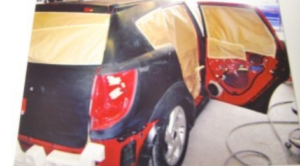
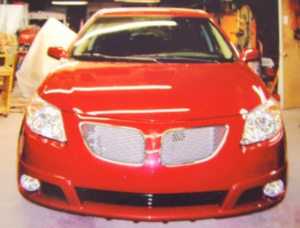
To learn more about auto body and paint so you can repair and paint your own projects to put more money in your pocket and have a skill that
will help you even put more money on the table, then check out:
Click Here Opens in New Tab http://www.learnautobodyandpaint.com to get my free 85 page DIY auto body manual!
Money TIP:
If you get a car that has been modified, try to restore it back to stock condition without putting in too much money to do it, otherwise it won’t be worth it.
If you do something like the Pontiac Vibe that I did above, you can make a hefty profit.
I don’t fully remember the exact numbers but I know I made about $6,000 profit on that car investing about $750 for help and all materials.
I don’t recommend removing large modifications to restore a car back to stock condition…such as taking off molded body kits, changing complete exhaust systems or changing full suspension systems.
It’s too much work and is not worth the hassle.
On the other hand, taking out a crazy over-the-top stereo system can be done within a couple hours, plus you can actually sell those items separately or put them in another vehicle of yours.
I’ve done that many times.
If you have a car for sale with a leaky exhaust or a loud aftermarket type exhaust and you really don’t want to bother messing with it, you can simply tell the buyer…
“Exhaust systems are very affordable to change. You can have a stock muffler put on for about $150-$200. I’ve already checked.”

Simple things like taking out a huge stereo system or lifting the car up again with minimal investment is what I mostly do.
Some cars might have coil-over springs, where all you need to do is make a few adjustments by hand to raise the car back up to stock height.
Checking the Suspension While Test Driving
You want to make sure the seller is not distracting you when performing this inspection.
Turn the radio off, roll the windows down and MOST IMPORTANTLY, don’t let the seller distract you. I get
Sellers that try to hide the vehicle noises by constantly talking to you.
Here’s a classic one that some sellers do to keep you oblivious to outer noises of a car. They keep the windows up and AC on while talking about their life story.
Just make sure that you’re aware of this and put a stop to it when you notice it.
Don’t be afraid to really test the car out. Step on the gas and check it out!
Tell him or her, “
Excuse me but I’m trying to check the car out here.”
Step 1. With the car running and in park, check the steering.
Turn the wheel from left to right, If wheel shudders or squeaks when turning, you should know that you may be low on power steering fluid, or you may have a problem with the power steering pump and/or rack and pinion system. Check belts for proper tightness and check for leaks. Usually a reddish fluid would appear if you have a leak in your power steering system.
Drive the vehicle around and just get comfortable with it. Feel like it is your own car.
Feel the braking, steering and handling. When on a main road, check for alignment.
See if the steering wheel is centered and if the car is pulling to one specific side or not. If you do notice a slight pull in direction, check tire inflation and tire ware after exiting the vehicle.
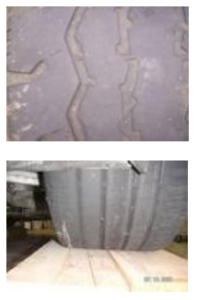
When tire pressure is low, the car will pull toward that low side causing improper alignment.
You also want to check the tire tread ware. If you see heavy ware on the inside or outer side tread of the tire, you know that there may be a more serious alignment problem that you’ll want to look into.
As you can see tire is worn on the inside.
This could be because of improper camber alignment or because of lowering of the vehicle. This is when you start to question the seller for accident history. It may also be because of simple lowering modifications, a worn joint, a tie-rod, a bad lower ball joint, misaligned camber and/or toe alignments.
You can slightly peek your head under the car and check for control arm or spindle damage. 85% of the cars that I look at never have these problems but it is good to be aware of what may come up.
Just make sure that the car was not in any major accident. Just because the car title is clean does not mean that it was never in an accident.
By doing proper inspections, you will be able to see if the car was in a wreck or not.
Don’t worry, I have some pictures and descriptions of car parts and locations at the end of this book to help you find your way around a car.
The Brake System
When checking the braking system, take the car for a road test.
Listen for noises while driving. If you hear a light scraping/scuffing noise without stepping on the brakes, your pads may be worn down and a piece of metal on the brake pad itself will touch your rotor and make that scraping noise.
It’s used to let you know that the brakes are low and needs replacing.
It’s basically a safety noise. Not a big deal, but it lets you know that the pads need replacing and the rotors should be checked out. A rotor is basically that metal disc that your brakes clamp on to stop the vehicle.
Feel the brake pedal with your foot when slowing to a stop. Is it a low pedal? Do you feel grinding in the pedal? If you do, then it means that you have went through your brake pads and are now feeling the vibration and grinding from the brake pad’s rivets that are grinding on to your rotor.
This means that, not only do you need to change your brake pads but you will need to resurface your rotors or maybe just get new ones.
If your brakes are firm and have plenty of meat left, you’ll have a high pedal and feel the car come to a good tight stop, not pulling toward any one side.
If the vehicle pulls to a specific side when braking, it could mean that you are down on pads on that specific side.
When changing brakes, I recommend to always to replace the pair together especially on the fronts. Never just put new pads on one specific side of the car.
60-70% of your braking power comes from your front wheels.
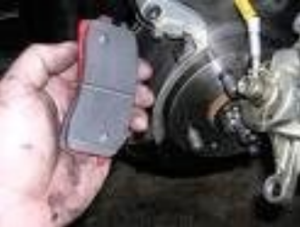
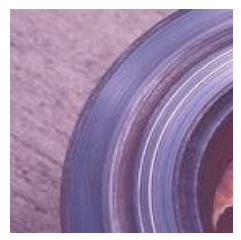
Here are some pictures of brakes and rotors:
First you’ll see really bad worn rotors. The deep gouge is caused by broken pieces and or rivets from your brake pads grinding to a stop.
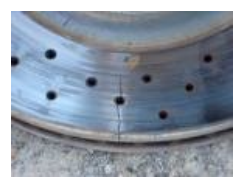
The second picture is a cracked rotor caused by severe heating that causes warping and cracking.
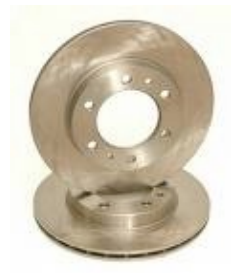
Finally, the last picture is a new set of rotors. They should not be shiny but look scuffed-looking.
The brake pads will have a nice stopping surface when the rotors are scuffed like this which is totally normal.
When rotors become very shiny, they will tend to squeak when stopping.
You might want to have them resurfaced or replaced for maximum performance.
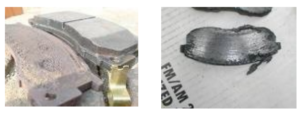
In this picture, you’ll see the difference of a bad pad and a new pad.
You’ll also see the gold color metal guide that will start to hit your rotors when the brake pads start to get low.
The last picture here is a set of worn pads that need to be replaced with a new pair.
#4 Mechanical & Electrical Inspections
Engine Oils
You want to open the hood and check for oil and fluid leaks.
Look all around the valve cover gasket, power steering fluid, & brake fluid reservoirs.
There may be a natural amount of dampness which is completely normal, just look out for heavy wetting.
If you do find an area that has fresh oil dampness, inspect the area thoroughly and see where the oil is leaking from.
When checking the engine oil, make sure that the oil is not a milky color.
Milky oil means that you may have an internal water leak in your engine, caused by a blown head gasket or a cracked head.
If you keep running an engine with these symptoms, you could be in for a surprise and the engine probably will overheat and or cease up on you. Here is a picture of milky engine oil, a bad sign.
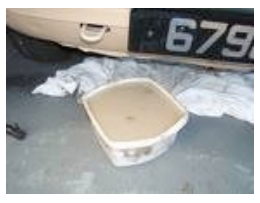
Check the transmission oil. Make sure the oil isn’t black.
Transmission oil is usually red in color, the same fluid color as most power steering systems. In fact, most cars use the same oils for the power steering and
transmission systems. Unlike checking the engine oil on a car, the car must be running on level ground to check the transmission fluid levels.
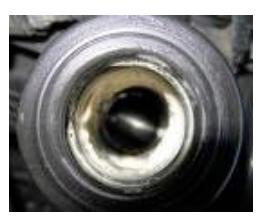
Just make sure the oils are clean and don’t have a bad burnt smell. Black engine oil is not a great sign but it really means that the owner hasn’t really cared for the engine much.
This black oil will result in low power and maybe a slight noise/knocking in the engine because the oil is broken down and not as thick as how it should be.

A big cure for this is a fresh oil change.
You’ll instantly feel and hear a night and day difference when changing the oil in a car like this, especially if you spent a few extra bucks and ran some good synthetic oil in it.
Here’s a true story…
I bought a 99 Acura CL. (UPDATE: This also just happened to me again on a 2011 Toyota Corolla. Similar story about dirty oil!)
Okay, back to the original story…
When I was taking it for a test drive it was very muggy on power. It wouldn’t move when you stepped on the
gas. Well it moved but it was very sluggish.
I knew something was wrong, but something simple. Another strange thing was when I stepped on the gas, I noticed white smoke flowing out of the exhaust as I was looking through the rear view mirror.
When I checked the oil after taking it for a test drive, I noticed that the oil level was strangely very high. When I was in negotiating mode with the seller I said…
“You know I’m taking a big chance with this car.“
The engine is shot. The piston rings are bad. And I may end up needing a new motor for this car. “It’s smoking like crazy!”
Because of that, I was able to get the car for $500.00!
I went home and drained the oil.
It had over 12 Quarts of oil in it!
Be reminded that this 4-cylinder engine only calls for about 4.5 quarts of oil.
The engine was drowning in itself. That was the reason for the smoking and sluggish acceleration. I drained the oil out, added new oil and it ran like a champ!
I sold it 3 days later for $4,200 and mind you, the car was clean in and out. All I did was drain the oil and add new oil to the proper level and sold it.
Engine Detailing
All cars have some type of small dampening or leaking from the engine. A simple engine detail will make under the hood look like new again. For a cleaning agent, I recommend something called Oil Eater. They sell it at Costco & Walmart. It is an all-purpose degreaser agent.
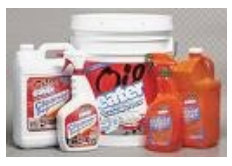
It doesn’t have to be Oil Eater, it can be any degreaser.
Simply water it down for household use or use it straight for engines.
I’ll show you on video how to do this step, if you also got the video training part of this course.
If you can peek your head under the car and look for wet oil spots or dripping, the usual cause is a leaky valve cover gasket that will drip down and leave an oil trace down a side of the engine and on to the bottom of the oil pan.
This is a minor fix which requires a simple 10mm socket or a screwdriver to take off the valve cover and replace the gasket.
Sometimes all you need to do is tighten it up a little.
Costs range from less than $40 depending on the vehicle if you decide to tackle it yourself.
A mechanic would charge you about $60-$100. NOTE: These are quotes for 4-cylinder engines, not 6 or 8-cylinders. I know that some valve cover jobs on bigger engines are more work and could take a little more time replacing the gasket.
Reminder:
Make sure that the oil on dipstick is properly in line with low and high mark on the dipstick. Be sure that your oil is not sludgy or milky in color or texture, meaning that there is water in the oil.
Also known as the “Blown head gasket!”. Some repairs may be as simple as changing the head gasket. Some engines may need extensive engine overhauling and head resurfacing to properly run right.
Be aware and well-informed that if purchasing a blown- head-gasket car, you may be looking at $300-$1,500 in repairs unless you have connections with mechanics.
Make sure to stay within your budget.
Keep in mind the (PME) Profit Margin Estimator. You don’t want to invest too much money in a car if it ends up taking away from your end profit goals. Also, look in your radiator and check for oil floating in the radiator fluid. Another sign of an internal engine leak.
Noises in Engine
(A Cheap Noise VS An Expensive Noise and How To Tell The Difference)
If you hear a clicking noise which revs up in speed with engine acceleration, it may be sticky valves or lifters which can be cured with an oil change and some oil thickening additive.
I recommend using STP.
When inspecting a car with a light ticking noise, check the oil. If you see that the oil is very black, you know the oil hasn’t been changed in a while, most likely that’s why you hear the noise.
Do not say to the seller,
“Ohh, you need an oil change that’s why your engine is making that noise.”
That’s a NO NO.
You want to make a big deal about the noise and weave in to the conversation that you’re taking a risk in buying the car. This is why you can low ball your offer on the car to get it as low as possible.
I bought a 99 Kia Sportage once for $400. The guy said it was running funny with no power whatsoever. I went to go look at it.
By the way, he was asking $1,000 for it.
When I started it up, I noticed a “miss”. A miss means that the engine is not firing in all cylinders which gives you a lumpy, idle and rough acceleration with no power.
Usually, a faulted spark plug or a blown head gasket. But there was no water in the oil, a good sign! If it was a blown head gasket or a major problem, you would have water in the oil or oil in the water.
I offered him $400 cash and during negotiating, I told him
“Look, I am taking a chance here. I hope it is not a major problem like a cracked head or a jumped timing belt.”
I made the problem seem worse than it was. He took the money in a snap.
I had it towed home with AAA. However, I recommend getting MCA for Roadside Assistance.
Loud Engine Noises
When you hear any loud noises coming from an engine (knocking) and when you rev the engine the noise gets louder – you should know that you have some serious issues.
You may want to step away from the deal unless you know that you can steal the car and have the motor replaced at a reasonable cost.
Example:
I recently bought a 2007 Toyota Camry SE. 87k miles very nice car but problem was that the engine was bad. The seller was asking $2,500 OBO (Or Best Offer) – I managed to scoop the car for $2,000 cash.
Money TIP:
You want to be sure to be the first caller and the last caller when scooping the most profitable deals, anyway I was able to get an engine from a junkyard for $1,500 it was out of a 2009 Toyota Scion with only 23,000 miles on it!
At that point I was in the car $3,500 without my time and labor.
It took me about a day and a half to (R&R) the motor remove and replace the engine. I did it at home in my garage.
The Blue Book on the 07 Toyota Camry was about $8,500 in good condition I listed it for $7,500 or best offer and got $7,250 cash a week later for a total profit of $4,750 in eight days with two days’ worth of work invested.
Wow!
Again, if you don’t have the know-how to fix your own cars just simply make connections with mechanics and auto body repairman around your neighborhood and tell them that you may have some business for them in the future.
Tell them that you work on cars and sometimes you like to sub out work.
You can usually have an engine replaced for about $500-$700 (again depending on the vehicle like Toyota’s, Honda’s and Mazda’s) – mostly any 4-cylinder Asian cars engines are usually very affordable to repair.
American cars are very affordable too, but not very dependable, in the eyes of the masses. What do you think? Do Asian cars have a good stereotype for dependability?
Your profit margin will be smaller if you sub out work, but you can still make hefty commissions.
Air Conditioning Systems
I would say about 30-40% of the cars I deal with have A/C problems. Sometimes (if you’re lucky), all it will need is a simple can of Freon.
You can buy these cans of AC charge at any local auto parts store and I’ll show you how to do this on video.
Sometimes the problem may be more expensive such as a seized AC clutch, a bad AC compressor, bad evaporator or a dirty receiver drier (which is the AC filtering system).
If you’re unfamiliar with AC systems, you can take it to a local air-conditioning specialists to have it checked.
Yes, repairing the AC system can be expensive and you may want to stay away from having those repairs done and just selling the car with no A/C, saying that you have no idea what’s wrong but it might just need a simple A/C recharge.
People will usually think it’s something simple. Give them a small discount to entice the purchase and make the sale.
Buying a can of Freon and charging the system is well worth a try.
I’ve had many cars that I have fixed just by adding a can of Freon to the car.
Just make sure the system is not overcharged. The usual low side reading is 45–55 psi and 225–255 psi on the high side. They also have cheap gauges that you can buy and they hook up very easily.

Like I said, I’ll also go over charging an AC system step by step in the Video Training Formula section for you.
Exhaust systems
Some vehicles may have exhaust leaks that come from the exhaust manifold which are the pipes that come out of the motor – very rare, to find holes in the muffler or exhaust pipes, you may want to listen to the exhaust system while revving the engine up.
Have a friend help you spot the exact location of the noise and leak.
When checking the car you’ll most likely hear a “putting” noise out of the exhaust/exhaust pipes. Jack up the vehicle supported by using jack stands with the car running and inspect for leaks.
Most auto parts stores will usually sell exhaust tape which is a metal tape that you can use to cover holes. This is a quick fix for muffler systems but I very rarely see this problem. In fact I haven’t had to do this in years.
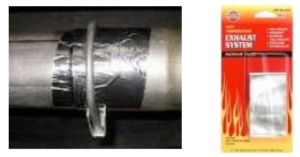
Small Under-the-Hood Fixes That You May Need To Perform On a Vehicle For Quick Profits.
Check or replace spark plug/wires
-Check or replace air filter
-Check or perform an oil change
-Degrease and clean engine
-Check or flush radiator/add new anti-freeze (coolant)
-Clean battery terminals
-Degreasing engine.
Make sure to cover your distributor cap or any electrical connections with a plastic bag.
It’s usually not a problem if light water hits them but try not to get electrical components soaking wet. Make sure to start the car up as soon as you’re finished washing the engine.
Close the hood and let the engine run for 10 minutes let the heat from the engine steam off the water.
If these quick fixes are too technical for you, just sub it out.
Make sure you have a good relationship with a mechanic to get good prices on repairs. If you want to do it yourself, I suggest to pick up a Chilton’s or a Haynes repair manual at your local auto parts store.
They’re available for most cars and trucks.
For special manuals check ebay.com or google.com. You will find everything you need on-line.
I’ll also have most of these videos on “quick fixes” in the Video Training section of the members area so ENJOY!!


